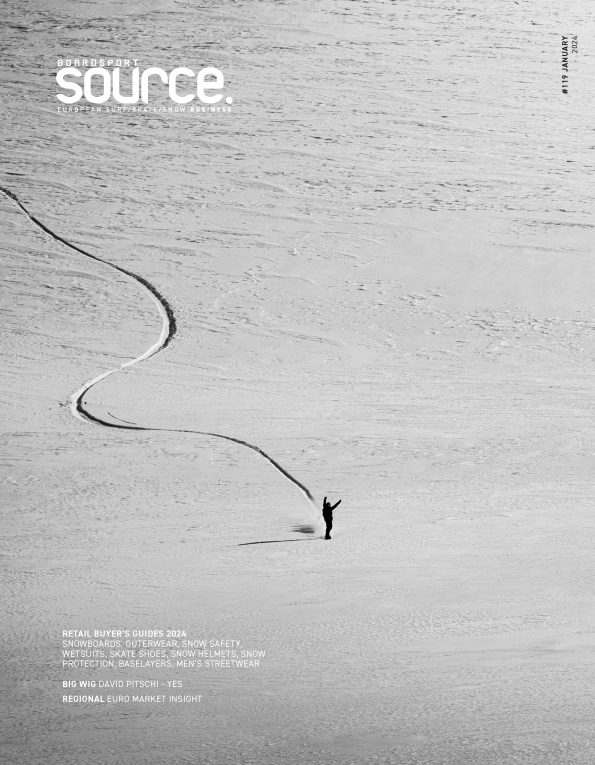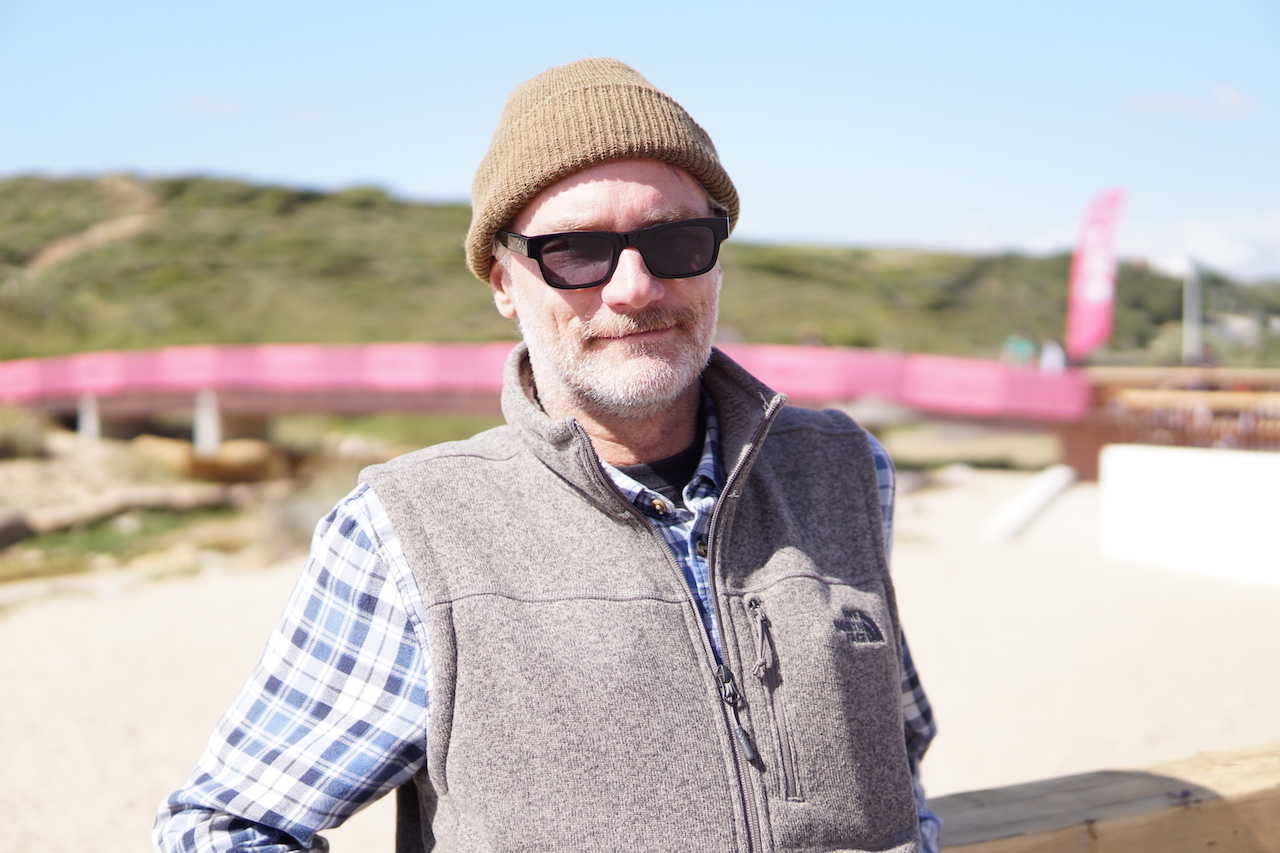
Vans Visionary Scott Sisamis Explains How Listening Is The Key To Their New Surf Positioning
Vans have gone from strength to strength in recent years, their unique heritage striking a chord with consumers enamoured by the romanticism of our counter culture industry. Despite Vans’ seemingly never ending year-on-year quarterly growth figures and increasing mass appeal, the company not only still invests in the culture and sports they were born from, but actually place them at the centre of every marketing exercise.
Their four pillars of art, sport, music, and street culture are their raison d’etre and Scott Sisamis, who has been with the company for 23 years, has been instrumental in telling Vans’ stories through these lenses. Now serving as ‘Global Director Action Sports, Surf & Snow’, Sisamis is a true visionary and SOURCE Editor Harry Mitchell Thompson had the chance to sit down with Scott at the Vans Duct Tape Festival in Portugal to discuss their repositioning in the surf industry.
In a fascinating conversation Scott unpacks the rationale behind one of the boardsports industry’s greatest success stories. “Cultural progression through radical experimentation,” is the new mantra and we dig into this with Scott where we find out how simply listening has been put at the centre of everything they do. We also explore the launch of the Vans Surf Boot and the conversation it created, look at the future of the Vans Duct Tape and find out how the brand is looking to evolve its storytelling through using ambassadors as content directors.
Make sure to check out our One Eyed Monster gallery from the Vans Duct Tape Festival in Ericeira, Portugal and our interview with Vans Senior Global Marketing Manager, Surf & Snow Kevin Casillo who explains the brand’s surf marketing activations for 2019.

Scott Sisamis – Vans Global Director Action Sports, Surf & Snow. Photo HMT
What marketing boxes does the Duct Tape Invitational, tick for Vans?
We re-launched our surf positioning this year after two years of background work redefining the category. We had been doing a lot of things in surf; Duct Tapes, the Triple Crown for 22 years, US Open for six years. And we were really finding that consumers were not really talking about Vans in a surf sense, even though we were spending money and putting in all this effort. We found that in the live setting with these touch points, people were having an amazing time and coming away with a good experience, but not equating it to being Vans that was providing it.
This made us realise that we needed to redefine our position. I’ve been in Vans for 23 years and in this time I’ve figured that the athletes themselves are really just super concentrated versions of our consumers. They’re living the life, they’re the same age, they have the same interests but that’s just their job and they have the ability to pursue it in on a whole other level. So we came up with our positioning as “outside the lines”, which really explores creative experimentation. On a bigger brand level, the goal and mission of the brand is to enable creative expression and this is really a take down from that.
The goal of everything is ‘thinking differently’. Being own-able and being responsible, and giving back to the culture. The catch phrase we use for it is “cultural progression through radical experimentation”. People like the George Greenoughs and the Nathan Fletchers experimented and pushed, and did things not to make money, they just wanted to have a better experience, or a different experience, or to grow their experience.
The new positioning really centres on giving back and providing platforms to do that. The Duct Tape ticks all those boxes, so to speak, and Joel (Tudor) and I have worked together for 20-something years. We saw a gap in longboarding; there was what the ASP at the time did – where Joel’s a two time World Champion – but it basically degraded to a longboard version of high performance short board surfing. There was Alex Knost and Tyler Warren and all these kids that just didn’t have a stage to perform on. So culturally we felt, even before the positioning, we could provide something that would give the stage to this younger audience.
When we started out – next year will the 10th anniversary of The Duct Tapes – the invitational always had a wildcard spot for women. The were women like Kassia Meador, Jen Smith and just a few girls around the world that were on that level. But now here we are and there’s more than enough talented female longboarders that are on that level, meaning you can have a full field. So we have a men’s and a women’s category now, which is a huge step forward and provides a huge platform. It’s more opportunities, more awareness. And it’s a chance for the consumers to see, “Hey you don’t just have to ride a pointy white board. You don’t only have to do one thing to be cool. Everything you do could be cool. It’s what you want to do.”
Traditionally the Duct Tape was just a longboarding event. But over the past few years we’ve seem some more interestingly shaped boards and shorter boards in the Festival side of things…
In the earlier years we saw that a lot of the great longboard shapers were either not with us anymore, or had grown older. Because longboarding was so unpopular commercially or in media even, their businesses had died by the wayside, or they had to adapt and make performance short boards. So when we started the contest Joel really wanted to preserve that and offer those surfers the right platform. But over the years we’ve seen that people like Dane Peterson, Alex Knost and Ryan Burch (all talented longboarders) were also gifted at shaping and experimenting and we saw them really shaping a lot of the longboards that the other competitors were using.
As we started thinking about it we thought it’d be really cool to have something to leave behind in the communities and to foster the idea of experimentation. We basically came up with what we call the DTF, or the Duct Tape Festival. We pick four people for each event and we give them a budget and a brief to make two boards; one board is designed for the break and then the other board is designed around something experimental that they’d like to ride at that break.
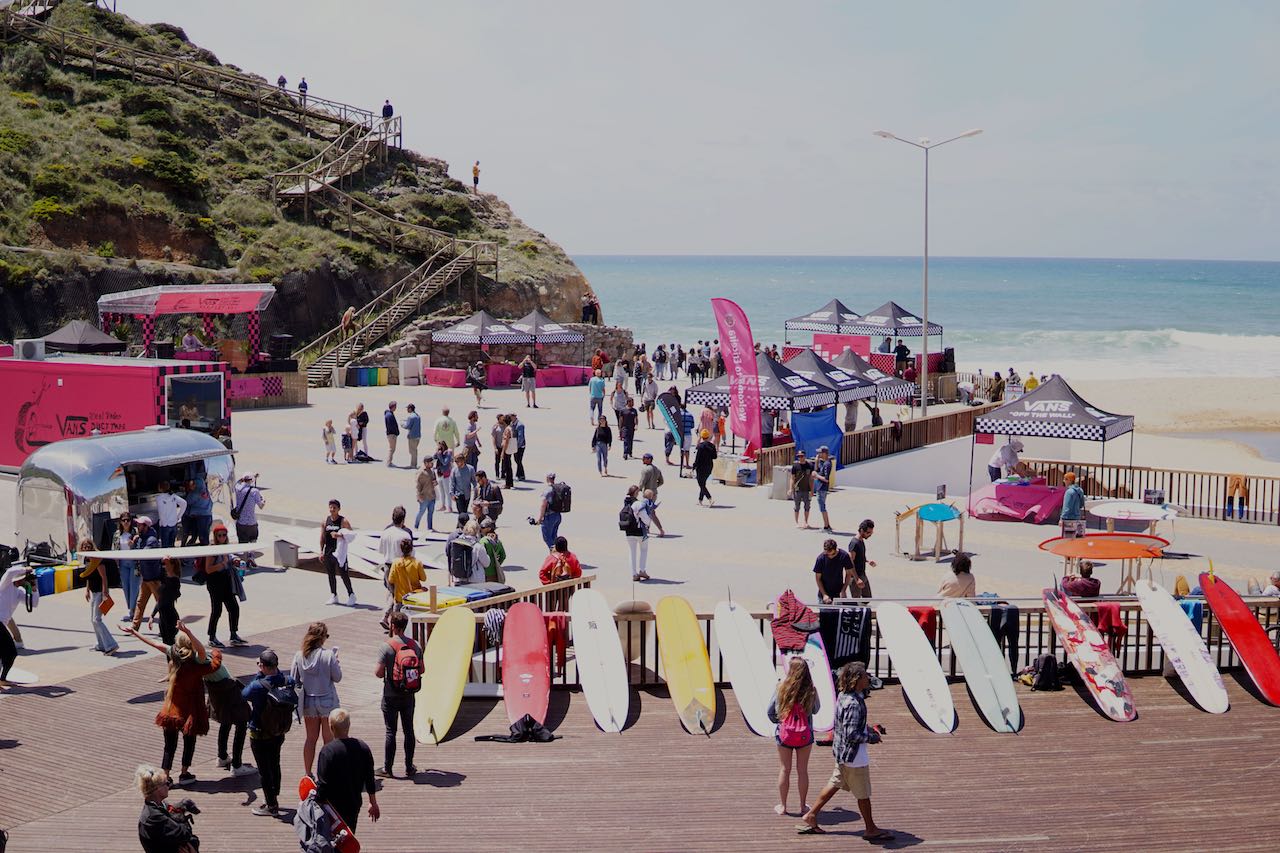
Vans Duct Tape, Ribeira D´Ilhas, Ericeira Portugal 2019. Photo HMT
The festival vibe is a popular target market for consumer brands. Where do you see the future of Vans Duct Tape Festival, and does it have an even bigger scope than this?
Vans as a brand has four pillars; art, sport, music, and street culture. So this really checks all of them from the beginning by design. I’ve worked on a lot of categories in my times at Vans. All in action sports, but I’ve also worked on Classics, the Warped Tour and more. We have a good team that works together and we’re able to bring all those things to life. Chris Johanson is the artist for this event and he’s also an amazing musician, so his band’s here today to play. People attending this see there’s a strong open surf component to it, actually inviting people to participate and there’s also music and art. That’s pretty much our brand at its best when we’re doing those things.
I think for the future of Duct Tape, we’re taking these things from where the foundation is already and amplifying as we go.
Looking at this big picture, you do well at showing the elite performance side of each sport but then also showcasing the cultural side too. In surf you have the US Open, Triple Crown for the performance side and then the Duct Tape Festival to celebrate performance, but also the expressive side. In skate, the Park Series and Shop Riot on the performance side and then House of Vans to showcase music, art and culture.
Can you talk me through the last five years of this strategy; the idea behind your pillars and propping your marketing strategy upon them.
We’re trying to do some different things with the Triple Crown. We’re trying to create a significantly different lift on the US Open this year. But all the ideas come from listening. We spend a ton of time engaged with consumers and athletes. So the products, the ideas, all of it really comes from listening. The better listener you are, the better chance your brand has of taking the information in, and then interpreting that to fit with what you’re trying to do. Rather than just forcing things on the consumer. Each generation has different ways of consuming media and they’re learning how they want to experience things. So, it’s on us to listen and provide them what they want and not force what we think. There’s a dramatic difference between this and what I see a lot of in the surf industry, which has had its struggles. A lot of people say, “We did it this way in the 80s and 90s. We’ll do it this way, just harder.” But that doesn’t really work. I think the biggest thing, why Vans as a whole has maintained and its relevancy continues to grow is because we put so much effort in to listening.
Could you tell us a bit about your background?
I started at Vans in my mid-20s. Before that I was a school teacher, and a snowboarder, skater and surfer. I got into the job at Vans through snowboarding and I also knew everybody in skateboarding and a lot of people in surfing. Vans was very small at the time. It was maybe 30 people. In 1995 /1996, I was one of three people in marketing.
I think even when we were bought by VF Corp in 2004, there were only 10 of us in marketing. It was a small group and we did a lot. You wore a lot of different hats. I would work on all the sports teams, but I also might use our athletes and shoot a whole Classics campaign. My wife used to be one of the Vans girls, so I might be on a shoot organizing and deciding how we’re going to come up with a campaign for our women’s side of the business. But it was out of necessity, more so than expertise in all these things. But I learned a lot along the way too.
So then VF bought the company in 2004 and what role did you have then?
They were really impressed with the marketing. We were pretty poor financially at the time, to be totally honest.
A bunch of surfers and skaters trying to run a business?
Actually, not a bunch of surfers and skaters. Those earlier years I was one of just a few people who did any of those things. We had a lot of people from lifestyle footwear brands and big box retail franchises. We didn’t have the same culture that we have now. They were at a crossroads constantly deciding, “How do we just become this?” And it was almost fighting the action sports heritage that they had. Somewhere, along the line through the Dogtown thing, which I got to work on quite a bit, they really decided they needed to embrace it. And that was really a turning point. And now that’s a lens we can hold and it allows you to be so many more things, because you’re rooted in something. Lifestyle emanates from something.
So I think that was just the progression. VF never told us what to do, they just said, “You have to hit this goal.” We are also lucky enough to some really smart people. Doug (Palladini) who’s our president now, was in charge of our marketing then, so I worked directly for him for a lot of years. He’d been a publisher of Snowboarder and Surfer and had been involved in the first wave of E-Comm and action sports. So he had this really diverse background and a lot of really rad ideas. I feel we have a good group of people that hit our mark, and it gave us the ability to grow.
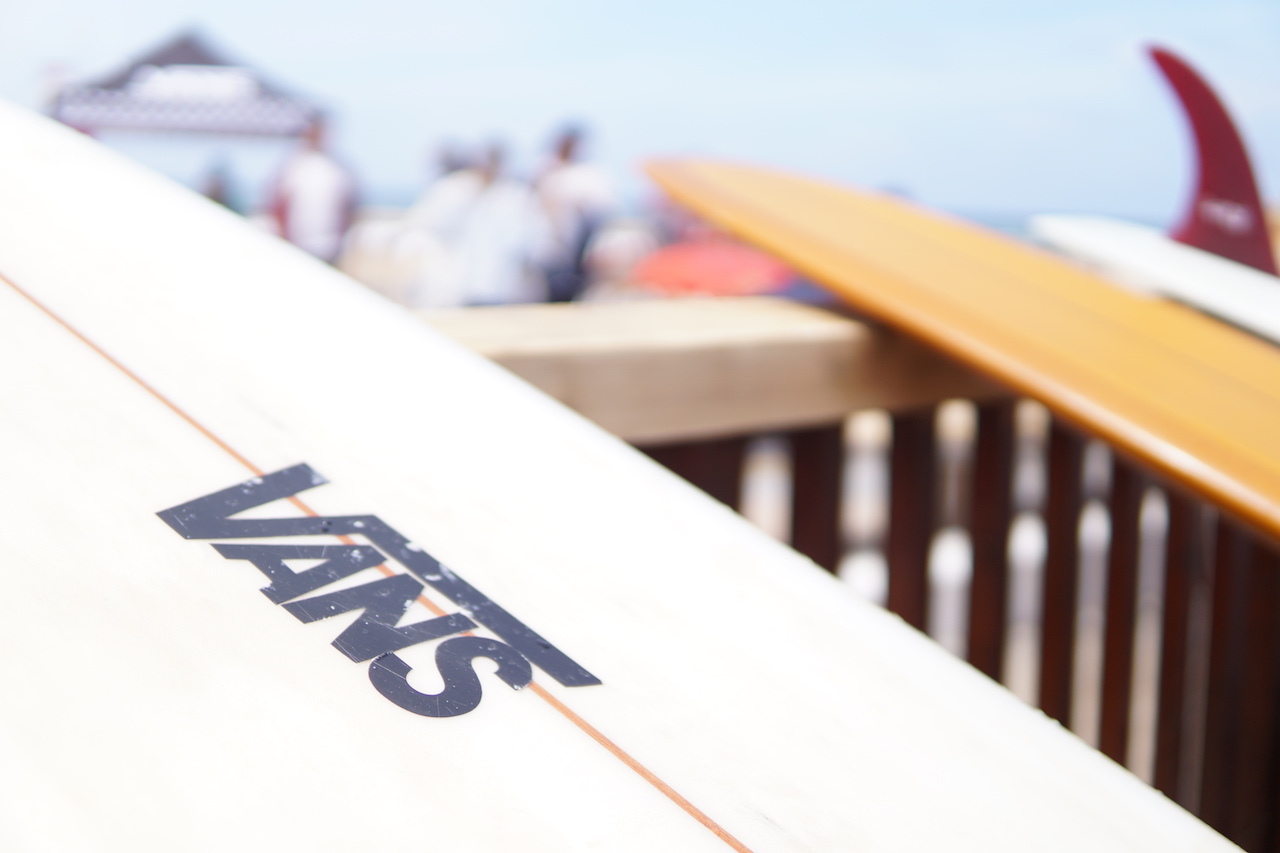
Vans Ducty Tape. Photo HMT
How’s the launch of the surf boot been received?
It’s really the example of the positioning “outside the lines” thing. It’s this idea of doing something different, something experimental. And a surf boot in itself is not experimental. There are two types of surf boot, one for surfing colder water and one for warmer water. But all warm water boots are really just reef walkers. We designed ours with the theory of making a skate shoe to surf in. And to help you surf better.
I was actually out of action the weekend that it launched. So, I was on my phone watching all the social as it launched and the first post, within an hour had a couple hundred comments, which is pretty significant. Especially for a product.
People were going back and forth, “Oh this is, stupid. What the f** are they doing?” Or, “If somebody can do this Vans can do it.” No matter whether the conversation was positive or negative, the fact that people were talking about it meant that the positioning is working. The fact there were people arguing both sides is a powerful thing.
So to me it was already a win. The bootie market itself is relatively small. I did a bit of research before we did it and if you sold everybody that needed booties, you’d sell 35,000 pairs. But in a Classic shoe, we sell that in a week through Authentics. So it was never about, “Hey, we’re going to make another billion dollars with this thing.” It’s like, “We want to do things that are going to be impactful, that are going to be better for people and get people talking.”
Any other product innovations that you’re working on in surf?
We have an internal surf task force. It’s a cross functional team, which is really rad.
That sounds like a cool job…
It’s good but also has its tough moments too. Working cross functionally, and especially as an organization that’s grown so big, can have its challenges. But it’s also really rewarding. We discuss, “What are we doing product-wise? What are we going to do in marketing? What are we going to in sales? What are we going to do in distribution?” And it’s a group of 14 to 15 people working on this together. So there are debates but at the end of the day we have to decide as a group and come together with one plan. There are always things in the pipeline, and we work 18 months out.
So you’ve got something in the pipeline, then?
Mm-hmm (affirmative).
What are your views on the current media landscape, and how you talk to consumers?
Obviously social is the huge one. But even that landscape shifts day to day. I’m in a fortunate position where I get to see a lot of all the sports. In BMX, their media was already really small to start with and it went away very quickly. And so immediately the athletes themselves employed this DIY approach and they became really powerful themselves, and skate and surf were soon to follow.
It’s all about how effective it is though. I think it’s a constantly changing thing and you see some athletes that tell genuine stories that are relatable to the consumer. You see other people that almost try to operate like a brand themselves and it’s not as effective. We track all of our athletes on social and monitor it by the month. We’ll look at who was up, who was down, how many times they posted, what kind of engagement they saw. When we see sharp spikes, say somebody’s down 25% we’ll dive into them to try and figure the reasons.
I’ve been driving rider generated content for the past few years – where the riders are the directors themselves. From my experiences and talking to a lot people, it’s super relatable because people want to tell their story. So instead of a brand telling those rider stories, for example we’ve been working on a thing with Alex Knost. Al is going to tell a story about not only himself but these other riders, and the particular journey they went on. That’s something anybody can do. I think again traditional action sports, or traditional story telling is, “Don’t worry, we’re the brand we’ll stick you guys into pictures and we’ll tell the story.” But they can actually tell the story better. They are the outlets, they’re the channels themselves. We need to empower them and work with them, and we offer them the support to do it.
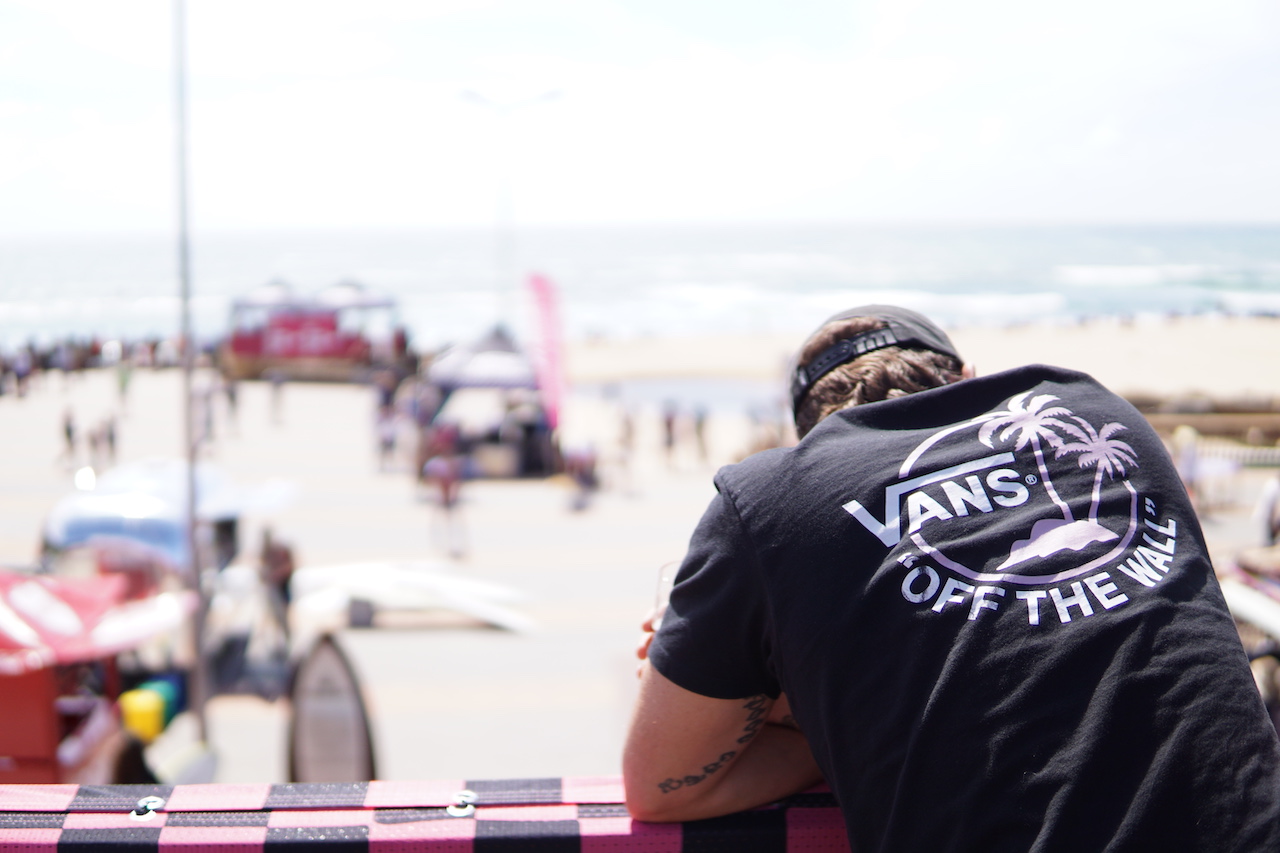
Vans Duct Tape. Photo HMT




